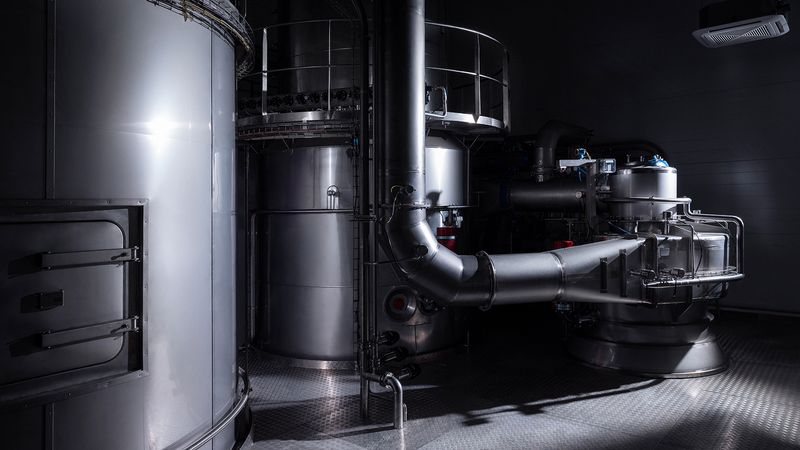

Securing plant-based food production: A holistic approach to contamination prevention
The ongoing threat of physical toxins and foreign bodies invading the holiness of our green harvest is a near constant risk and a very serious threat, despite technological advances and the close attention paid to food safety procedures. This is especially true for plant-based food as the raw ingredients come direct from the field. Among the 132 food recalls in the UK from January 2022 to December 2022, 28% were associated with the potential presence of foreign objects, including plastics, metal and glass.
The US Department of Agriculture's Food Safety and Inspection Service reported in 2019 that more than a quarter of product recalls that year were due to the presence of 'extraneous material' in food products. These incidents underscore the imperative need for all food manufacturers, including plant-based, to proactively address, detect and eliminate physical contaminants to maintain the integrity of their products.
The consequences of contamination are not only immediate but can have enduring impacts. Factors such as the severity of a product recall, post-recall efforts and the brand equity of the company influence consumer perceptions. The intricate interplay between remedy and brand equity, particularly during high-severity failures, underscores the importance of a strategic and comprehensive response to contamination incidents.
Understanding contamination dynamics
The story of plant-based food begins where soil meets seed – a sprawling expanse of farms, orchards and fields, cultivating the very essence of plant-derived sustenance. It is here where legumes, grains, nuts and vegetables flourish under the sun's nurturing warmth that a complex narrative of potential contaminants emerges. Within the vastness of these agricultural landscapes, where the earth is sown, tended and harvested, it is easy to see how metals and rock particles find their way into the plant-based production process.
Contamination complexities unfold from the natural harvest to the production line, with challenges intensifying as these contaminants hide within grains and vegetables. Detecting them becomes tricky due to differences in size and density, especially when a contaminant matches the density of the product or its packaging – a challenge for traditional inspection methods.
Each product and application require a unique detection solution, adding layers of complexity. Plant-based food manufacturers, bridging nature and technology, must tread this green landscape with precision, understanding the subtle nuances of size, density and the stealthy entry of foreign elements into our green food.
Identifying weaknesses in the production line
Food safety risks from physical contamination can occur anywhere along the production line, from the raw material stage to packaging. The good news is that there are formal frameworks available to aid food businesses in evaluating their manufacturing methods and the most vulnerable points to foreign body contamination.
Hazard Analysis and Critical Control Point (HACCP) and Hazard Analysis Risk-based Preventive Controls (HARPC) audits are intended to assist manufacturers in identifying these vulnerable potential points of contamination. Although HARPC aids in planning to mitigate against situations like intentional adulteration, food fraud and terrorist activities, HACCP assists in identifying the danger of infection. The earlier a hazard can be discovered throughout the production process, the better.
All manufacturers will be able to set up control points so that checks and systems are properly positioned to help remove food safety hazards based on the findings of these audits. These are referred to as Preventative Control Points (PCPs) and Critical Control Points (CCPs), respectively. A strategy to reduce the risks of physical contamination can be put in place by understanding how contamination happens and identifying weak spots in the production process.
Implementing multi-layered defence strategies
Establishing robust defences against foreign body contamination is pivotal and demands a strategic approach across diverse production stages. The plant-based food manufacturing process necessitates a comprehensive three-tiered defence.
Commencing at the initial stage of raw material inspection, early detection involves scrutinising incoming materials like potatoes for plant-based ready meals or ingredients such as almonds, soy and coconut. Detecting physical contaminants at this juncture not only helps with the purity of the raw materials but also shields downstream processing equipment from potential harm caused by undetected contaminants, such as stones in a batch of potatoes. This proactive step aims to eradicate foreign bodies before value-adding production processes begin, minimizing the risk of contaminants reaching advanced stages of production and escalating costs.
During production, the second line of defence, operates – no surprise – during the production process, specifically inspecting bulk or loose-flow products. This stage is crucial for virtually eliminating debris that might be generated as a by-product of grinding, pulping or blending. A meticulous inspection at this phase leads to contaminants being intercepted before becoming integral components of the final product. This proactive approach not only maintains the product's integrity but also reduces the chances of contamination-related breakdowns during subsequent processes.
End-of-Line Inspection, or the final check at the end of the line is essential but should not serve as the sole line of defence. This inspection serves as a last-resort measure, identifying any contaminants introduced during the packaging process, such as glass splinters from capping. However, reliance solely on this stage can prove less cost-effective. Manufacturers should prioritise identifying weak points in the production process early on before additional valuable ingredients are introduced. This early identification not only minimises operational costs and waste but also leads to a proactive stance against potential contamination risks.

Selecting appropriate technology
The selection of inspection technology is crucial in manufacturing plant-based foods, to aid in the identification and removal of physical impurities. The two main inspection methods, metal detection and x-ray inspection, are closely related to the traits of any potential contaminants, the particular product and its use, including the type of packaging.
Metal detection systems prove highly effective when dealing with metal contaminants. On the other hand, x-ray systems excel in identifying non-metallic foreign bodies, offering a valuable solution for maintaining the integrity of plant-based snacks. The selection process is not solely contingent on the type of contaminant; considerations extend to the packaging material. For instance, products encased in aluminium foil pose challenges for metal detectors but align seamlessly with x-ray inspection systems, given their ability to measure mass and identify metal contaminants within packaging.
In scenarios where a plant-based snack, such as protein chips, undergoes packaging in a gravity-fed environment with limited insertion space (typical in applications like vertical form, fill and seal processes), metal detection systems are the preferred choice. However, the versatility of x-ray technology extends beyond mere contaminant detection. It facilitates additional product integrity checks, including counting components, identifying missing or broken items, assessing packaging damage, monitoring fill levels, measuring head space and detecting any product trapped in the film or seal.
A strategic approach may involve deploying a combination of both metal detection and x-ray inspection technologies, especially when distinct foreign body risks are identified at different Critical Control Points (CCPs). Additionally, compliance with retailer contracts may necessitate the integration of multiple inspection technologies to meet stringent quality standards.
Future-proofing detection capabilities
It is wise to maximize the ability to identify contaminants for a particular product or application, and product inspection systems should always be configured for success. But specifications shift. New demands are made on manufacturing facilities as a result of the introduction of new goods, processes and equipment. Therefore, while making decisions on contaminant detection equipment, plant-based food producers should consider future requirements in order to give themselves and their clients the assurance that strong quality assurance will continue to be in existence.
While still meeting regulatory and efficiency criteria, modular systems assist businesses in adapting to these changing needs. Floor space is a big issue in many factories. Combination systems, which combine several inspection methods, can help to solve this issue. One example is the combination of checkweighing with metal detection or x-ray solutions.
Investing in inspection systems with digital data gathering capabilities, which support shifting supply chain and compliance requirements, is another way to prepare for the future. Alternatively, using inspection technologies that make it easier to undertake preventative maintenance to improve inspection performance right away and lower total cost of ownership can be key.

Embracing digitalization
Digital technology is changing the supply chain for the entire food production industry. Real-time monitoring and control of automated inspection devices, as well as the gathering of performance data, are all included in digitalization. Transparency and traceability are made available to all stakeholders in a supply chain by connecting these technologies and data streams. This transparency and traceability will be a significant benefit in the event that a product recall is required.
The growth of digital systems and networked supply chains to support higher quality requirements in production strengthens the link between digitalization and food safety even more. In addition to enabling complete documentation for compliance, this may enable producers to rapidly determine when machinery is not operating effectively and take appropriate action.
Although the digitisation process is not without expenses and difficulties, the majority of food manufacturers already gather data from their inspection processes in some way. That is made simpler by digitalization, which also improves operational effectiveness and efficiency and makes it easier to demonstrate compliance and due diligence. Undoubtedly, one of the major developments in recent times within the food industry is digitalization. Plant-based food manufacturers who start now will be prepared for the time when a nice-to-have becomes a must-have in the digital supply chain.
Conclusion
With more and more people eating plant-based diets – and even those who aren’t adopting a much higher intake of plants than ever before, plant-based food manufacturers must take a proactive and holistic approach to maintaining high standards of product safety.
Understanding potential risks, developing robust plans and embracing technologies like digitalization are crucial for immediate and future needs. Data-driven decision-making, alongside alternative inspection technologies, contributes to enhancing production line efficiencies and compliance.
So, like your veggies or loathe them, food manufacturers must take considered steps toward reducing the chance of expensive product recalls and safeguarding company reputation. With a strong, decisive and technologically smart approach to foreign body detection in plant-based food manufacturing, the future is looking clean and green.
For more insights, click here to download a white paper on metal detection and x-ray inspection or visit the website
(Written by Kati Hope, Global Account Manager, Mettler-Toledo Product Inspection)
If you have any questions or would like to get in touch with us, please email info@futureofproteinproduction.com






